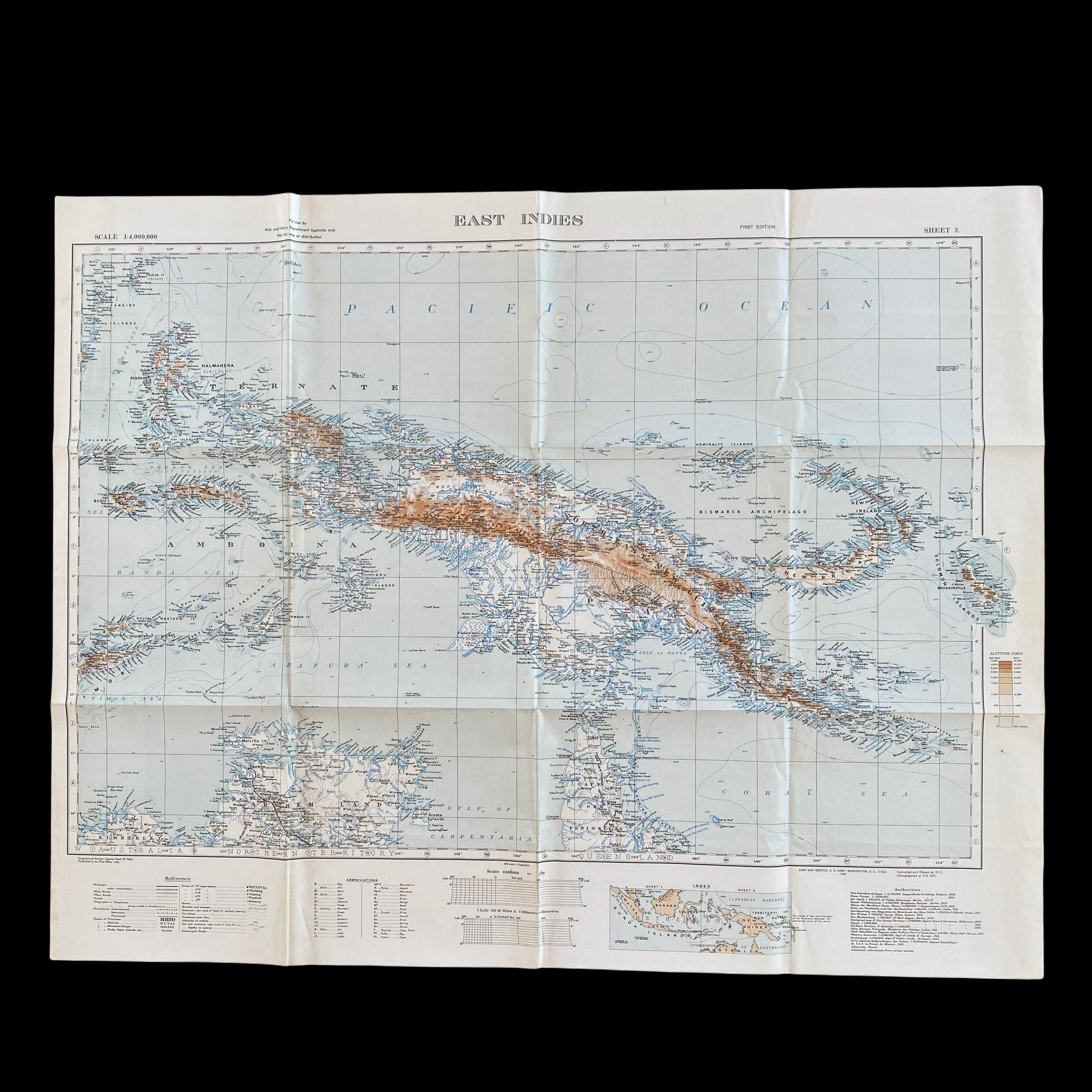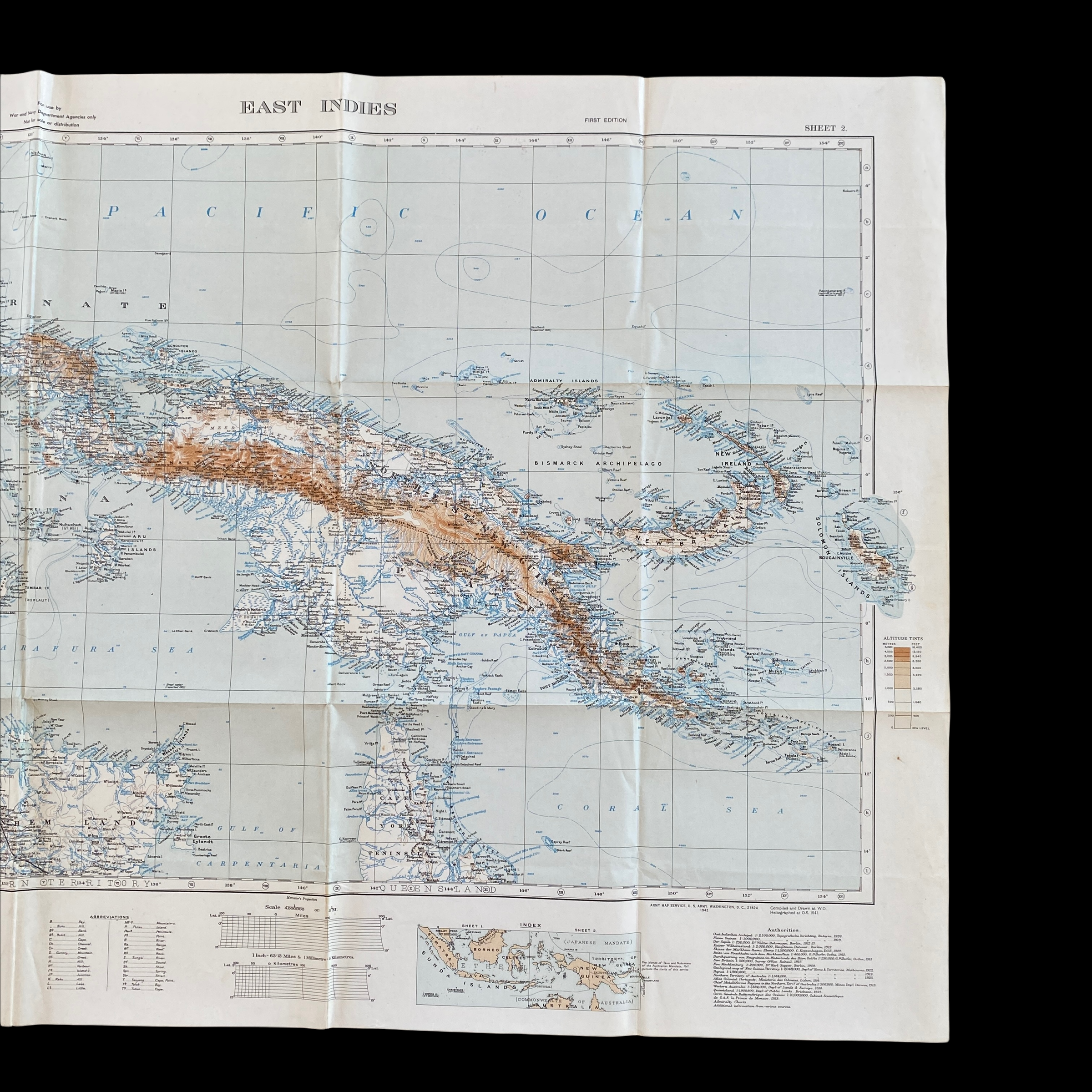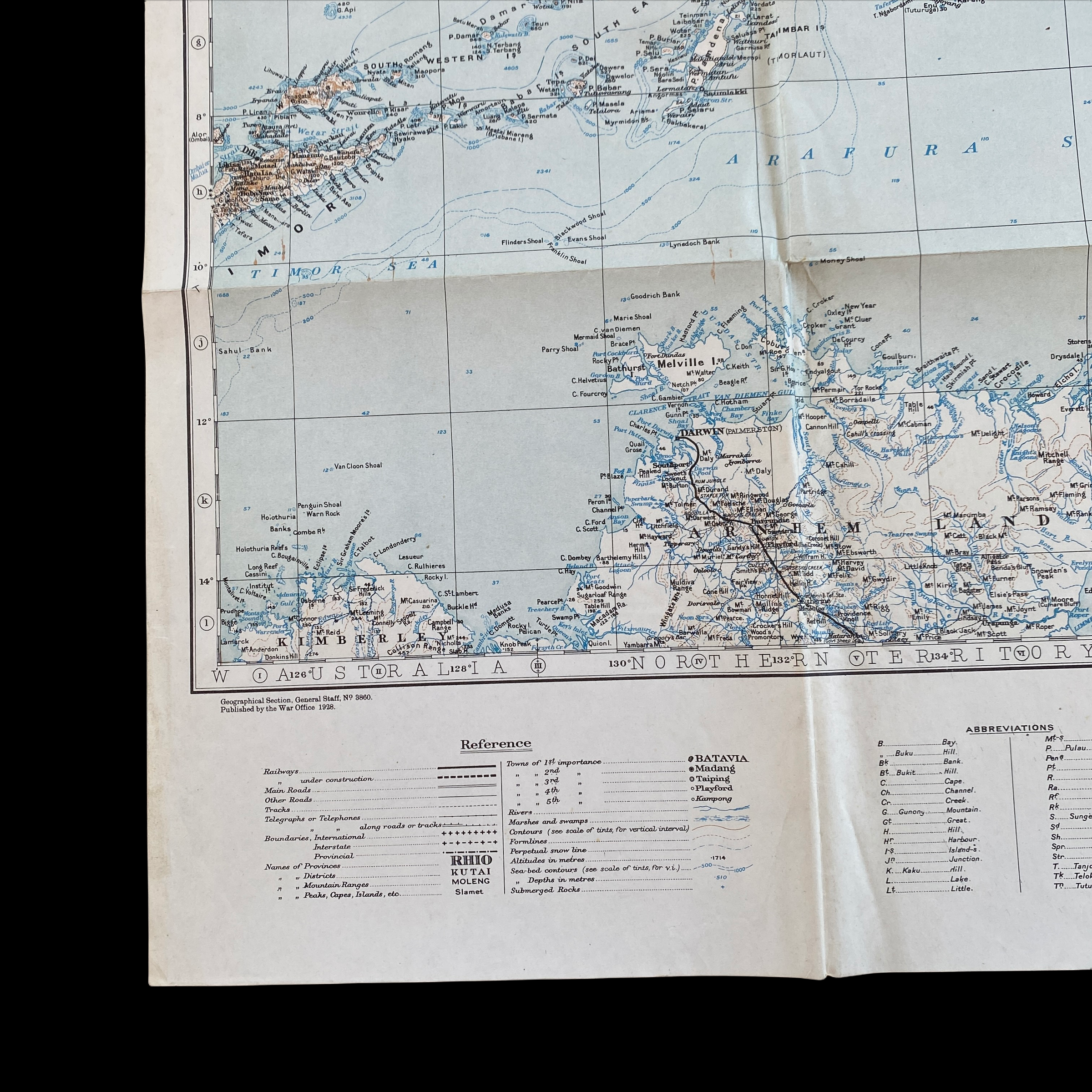Early WWII New Guinea Pacific Theater MacArthur Special Combat Operations Map



































Early WWII New Guinea Pacific Theater MacArthur Special Combat Operations Map
Comes with C.O.A.
Titled “EAST INDIES” this “FIRST EDITION” rare very early WWII U.S. Army Pacific Theater combat operations map was is dated 1942. Printed in 1942, what makes this World War II map even very scarce is that it was produced shortly after the attacks on Pearl Harbor and was used for some of the first initial U.S. engagements in the Pacific against the Imperial Japanese forces.
Showing the Pacific Theater region of the Solomon Islands including New Guinea, New Britain Island, and New Ireland, the New Guinea campaign was the longest of the Pacific War, with 340000 Americans fighting more than half a million Japanese. The New Guinea campaign of the Pacific War lasted from January 1942 until the end of the war in August 1945. This very rare and limited print count map was compiled with extreme detail showing altitude tense of the various islands as well as an extensively made reference legend showing towns of importance, roads boundaries, provinces, contours, and even sea bed countors.
For the Japanese, holding off Allied land, air and naval attacks in this territory was vital to their beginning war effort as it would both neutralize the Allies' principal forward base and serve as a springboard for a possible invasion of Australia. For the same reasons, General Douglas MacArthur, Supreme Commander Allied Forces southwest Pacific Area was determined to hold it. MacArthur was further determined to conquer all of New Guinea in his progress toward the eventual recapture of the Philippines. General Headquarters Southwest Pacific Area Operational Instruction No.7 of 25 May 1942, issued by Commander-Allied-Forces, General Douglas MacArthur, placed all Australian and US Army, Air Force, and Navy Forces in the Port Moresby area under the control of New Guinea Force.
The Western New Guinea campaign was a series of actions in the New Guinea campaign of World War II. Dutch East Indies KNIL, the United States, and Australian forces assaulted Japanese bases and positions in the northwest coastal areas of Netherlands New Guinea and adjoining parts of the Australian Territory of New Guinea. The campaign began with Operations Reckless and Persecution, which were amphibious landings by the U.S. I Corps at Hollandia and Aitape.
The Battle of Hollandia (code-named Operation Reckless) was an engagement between Allies of World War II and Japanese forces during World War II. The majority of the Allied force was provided by the United States, with the bulk of two United States Army infantry divisions being committed on the ground. Air and naval support consisted largely of U.S. assets, although Australia also provided air support during preliminary operations and a naval bombardment force.
The battle took place between 22 April and 6 June 1944 and formed part of the New Guinea campaign. The operation consisted of two landings, one at Tanahmerah Bay and the other at Humboldt Bay, near Hollandia. The landings were undertaken simultaneously with the amphibious invasion of Aitape ("Operation Persecution") to the east. The battle was an unqualified success for the Allied forces, resulting in a withdrawal by the Japanese to a new strategic defense line in the west of New Guinea and the abandonment of all positions in the east of the island.